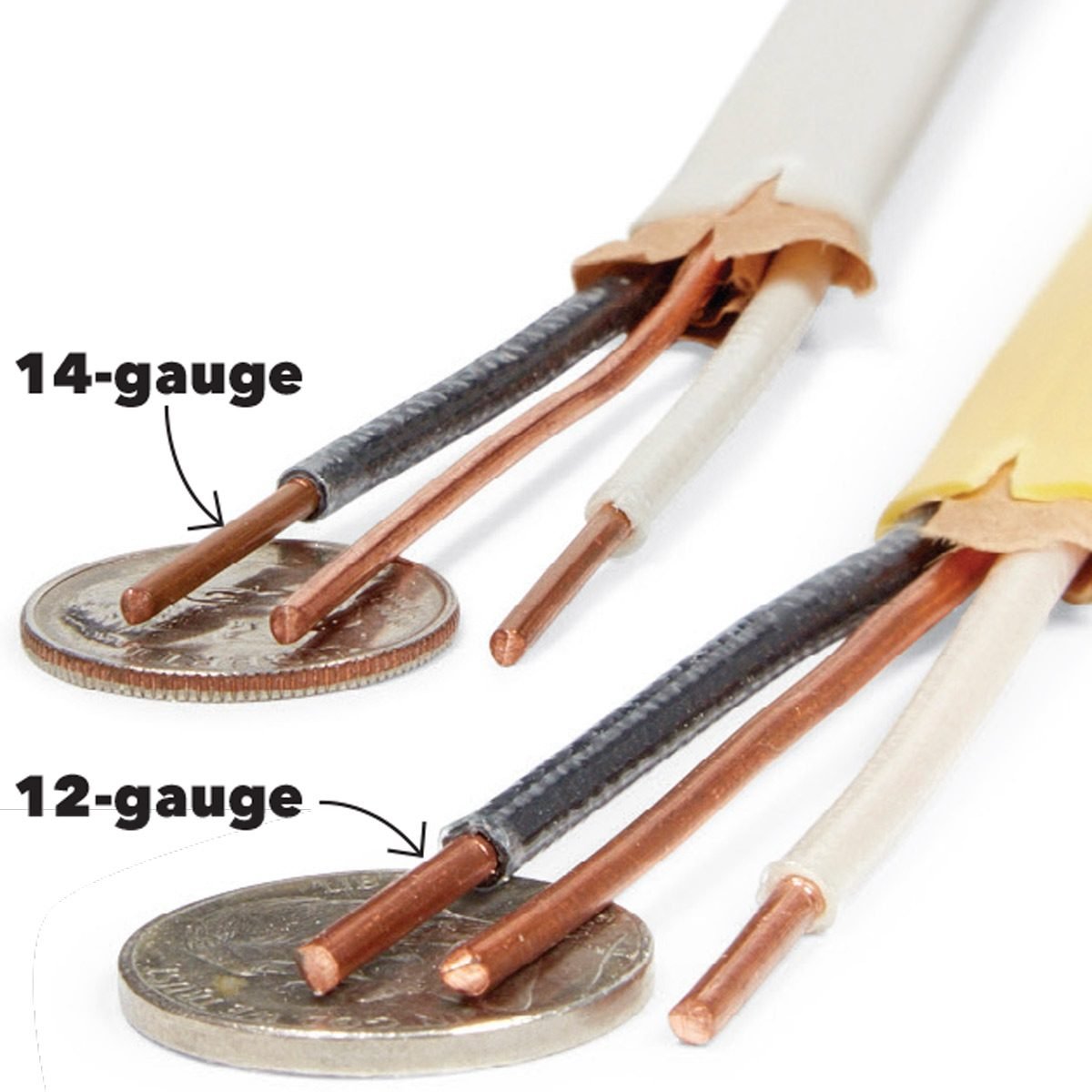
Thats right were giving you the chart right up front without making you read through paragraphs of text. The n gauge wire diameter d n in inches in is equal to 0005in times 92 raised to the power of 36 minus gauge number n divided by 39.

18-gauge is 102mm 16-gauge is 129mm 14-gauge is 163mm 12-gauge is 205mm and 10 gauge is 259mm.
How to tell gauge of wire. Double the wires diameter so you can calculate the gauge of a stranded wire. Then multiply that number by the number of individual wire strands to find the Circular Mils value. Take that value and consult an online table or use a physical comparison table to find the coordinating American Wire Gauge scale value and gauge the wire.
Wire gauge calculations Wire diameter calculations. The n gauge wire diameter d n in inches in is equal to 0005in times 92 raised to the power of 36 minus gauge number n divided by 39. D n in 0005 in 92 36-n39.
The n gauge wire diameter d n in millimeters mm is equal to 0127mm times 92 raised to the power of 36 minus gauge number n divided by 39. Wire gauge depends on CURRENT and LENGTH of the wireThis means even if your friend installed the same components eg. Inverter fridge etc as you you most likely need different wire gauge.
Wire sizing per ABYC standards for 12V DC 105C copper wire conductor. The cross-section of a cable wire should be selected to match the current consumption of the connected loads. This article will tell you how to calculate wire size and cross section.
An online wire size calculator helps you with dimensioning following your data input. American Wire Gauge AWG is a system of numerical wire sizes that start with the lowest numbers 60 for the largest sizes. The gauge sizes are each 26 apart based on the cross sectional area.
AWG is also known as Brown Sharpe Gage. SWG Standard or Sterling Wire Gauge a British wire measurement system. Heres a simple visual.
Twelve gauge is about the thickness of a nickel and 14-gauge is about the thickness of a dime. Also look at the breaker for the circuit in question to see if its a 15-amp or a 20-amp breaker. A 20-amp circuit requires wire thats 12-gauge or larger.
First find the exponent in the equation by subtracting the wire gauge from 36 then dividing by 39. Finding the exponent for 00 000 and 0000 gauge wire is slightly different. Substitute -1 -2 and -3 for the gauge in the formula above instead of the AWG value.
Second find 92 to the power calculated in the previous step. Measuring the wire will tell you what the gauge is. For this youll need calipers or mics to get an OD of the thin wire.
This option wont help everyone but it might help you. The diameters are as follows. 18-gauge is 102mm 16-gauge is 129mm 14-gauge is 163mm 12-gauge is 205mm and 10 gauge is 259mm.
How to Identify Electrical Cable Sizes. Look at the insulation on the cable. Search for text written on the insulation.
The last numbers in each string of text represent the AWG of. We can help you understand what length and gauge extension cord gets you and keeps you up and running. Extension Cord Size Chart Wire Gauge vs Length.
Thats right were giving you the chart right up front without making you read through paragraphs of text. If you want to know more like what is AWG or American Wire Gauge see below. Unless otherwise stated the gauge for products on our site is calculated using the Standard Wire Gauge SWG system also known as British or Imperial Wire Gauge.
Some of our manufacturers use the American Wire Gauge AWG system of labeling also known as the Brown Sharpe Wire Gauge and this will be noted in the products description. A 9-gauge wire would be pulled through a progression of 9 dies where 14-gauge wire would be pulled through 14 dies with each die getting a little smaller in diameter in order to reach the desired thickness. Today modern tools are used to precisely measure the diameter of the wire to maintain strict gauge standards.
Wire is sized by the American Wire Gauge AWG system. Wire gauge refers the physical size of the wire rated with a numerical designation that runs opposite to the diameter of the conductorsin other words the smaller the wire gauge number the larger the wire diameter. Common sizes include 14- 12- 10- 8- 6- and 2-gauge wire.
The white wire is the neutral wire which takes any unused electricity and current and sends them back to the breaker panel. The plain or it can sometimes be green wire is the ground wire which will take electricity back to the breaker panel then outside to a rod thats buried in the ground. To help you understand the correct choice manufacturers have labeled the outer coating of the wire with types and gauges of wire.
You see the insulation covering the wire tells the story about the wire itself. Along with different sizes of wire there are many types of wire used around the home. Typically used exclusively in barbed wire 15 gauge high tensile wire is only going to stretch 15-2 and will break at about 550 lbs making barbed wire break at 1100 lbs.
This 15 gauge wire will be smaller than 125 gauge but will have a higher strength because it is high tensile. You can find this wire in 2- or 4-point 5 spacings or. Cross-reference these two figures in the chart to determine which gauge of cable you need.
Please note that the smaller the gauge number the larger the wire. 10 one-aught is the common name for a 0-gauge wire. 20 two-aught for a 00-gauge wire.